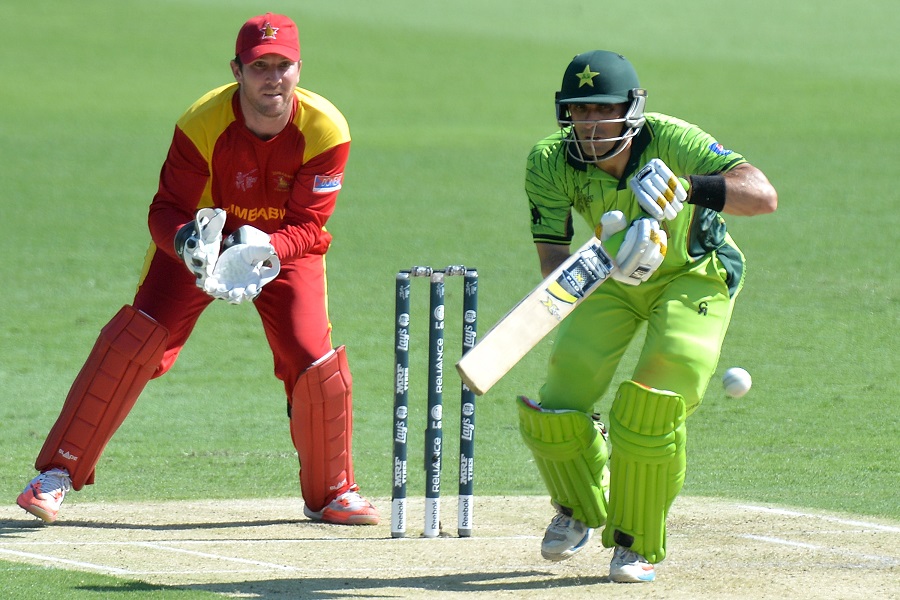The vices and virtues of Misbah

Pakistan's batting over the past week can be reduced to these two sets of numbers: 1 for 4, and 14 off 10. Against West Indies, they lost four wickets for one run. Against Zimbabwe, they put up 14 in the first ten overs of their innings. They are the sort of numbers that other sides dissolve boards or have their Test credentials questioned over. For Pakistan, those shocking numbers have inevitably become a debate about their best batsman in the tournament:Misbah-ul-Haq.
In fact, for Pakistani cricket, the past four years have been all about this very long, very monotonous debate: is Misbah holding Pakistan back, or is he holding them together?
You are probably aware of how this goes. Detractors complain that Misbah plays too slowly and is too negative. His supporters find such sentiments shocking and almost offensive, arguing that he is forced to bat this way to compensate for his team-mates' constantly failing.
The problem is that this debate never seems to come close to answering the question supposedly being asked. Misbah's critics, particularly in the media and amongst ex-players, blame spurious things like his family life or body language. He gets attacked personally over perceptions that those who know him know to be false. He is always blamed for not conforming to a gung-ho style that was never as successful or effective as it is imagined. In response, his supporters point to his fantastic stats. They argue that the reason he never gets to a hundred, that he gets forced to bat slow or that he does all those tuk-tuks, is that the rest of the batting is too weak and unreliable, and fails far too often.
Regardless of their relative merits, both sides try and channel all the blame on the other. While the personal attacks are vile and also irrelevant, they are expressing a kernel of a legitimate complaint against Misbah's batting and captaincy.
For starters, Misbah's approach to captaincy has won him great success as a Test captain. Yet the same reactive, conservative cricket has seen the ODI team steadily slip behind the world. Modern ODI batting has profoundly changed in the last few years, particularly with the change in field restrictions. Its impact can be seen in rising scores, in rising successful chases and in fresh batting records. In contrast, Pakistan still employ an approach which looks to start slow and hit out at the end - something that conforms to the ideal of the storied 90s sides.
There is no doubt that a lack of playing at home and access to the IPL, as well as injuries and form, have all affected the side. But it is also demonstrable that throughout this era, there has been a consistent conservatism to the tactics and selections of the team. A look at this tournament alone, where Younis Khan and Nasir Jamshed have been persisted with at the cost ofSarfraz Ahmed and Yasir Shah, gives an example of how fears about weaknesses have led to strengths being sacrificed. Moreover, batting tactics remain stuck in the past - 300 is still a mental block, chasing is still a cause of fear, rotation of strike is still an oddity and the innings breakdown is far too often behind the boil


0 comments:
Post a Comment